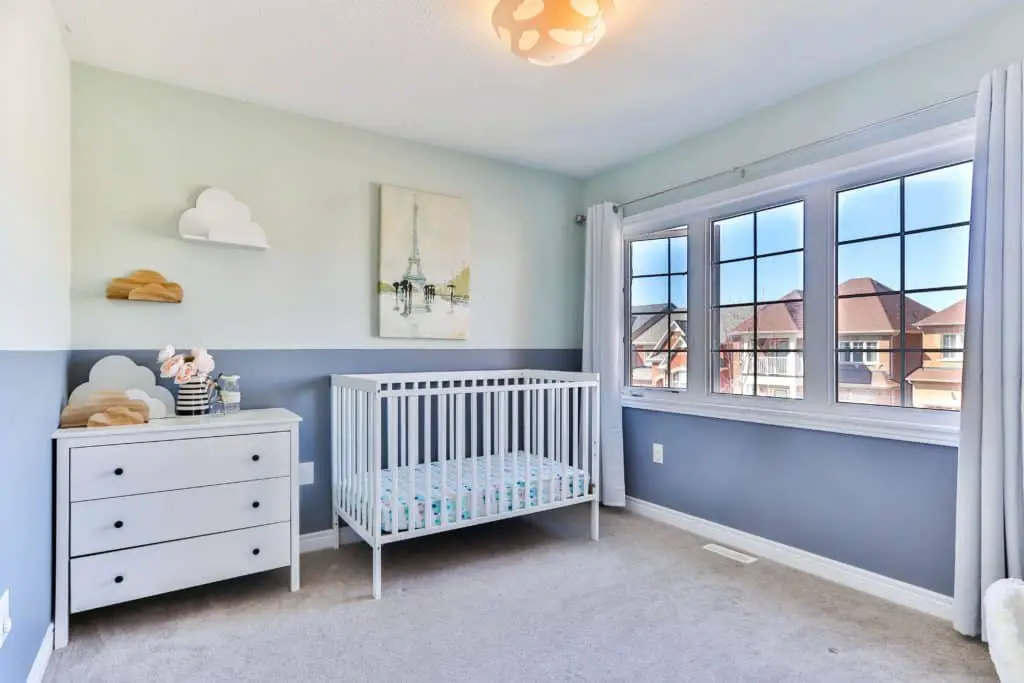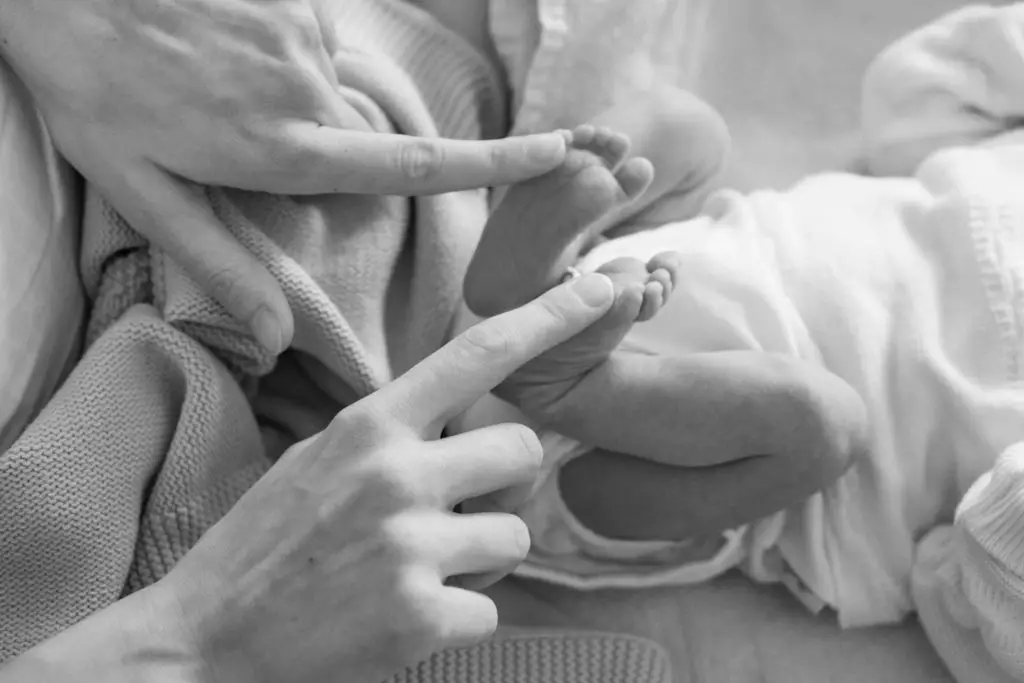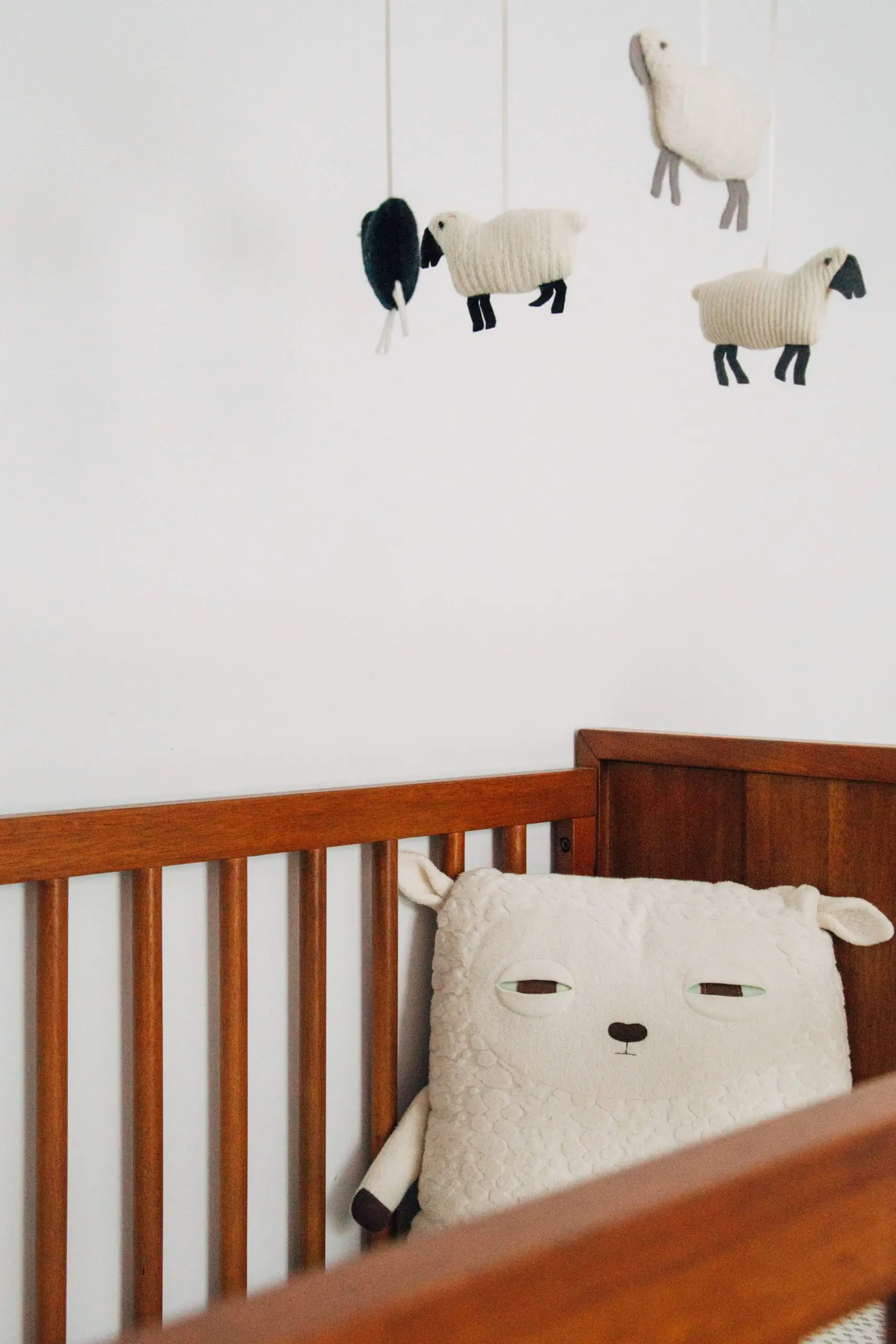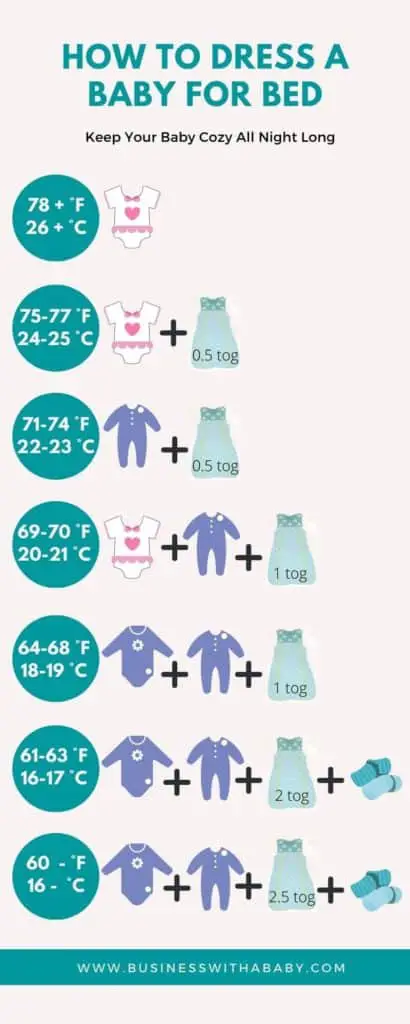*This post does not contain affiliate links*
As a new parent, I found it really stressful keeping my newborn baby cozy at night in cold weather.
Not only is keeping a baby at the correct body temperature critical for a good night’s sleep, but infant sleep setup plays a role in the risk factor for sudden infant death syndrome (SIDs).
I’ll show you the best way to keep your little one at a comfortable temperature all year round
Set Your Baby’s Sleeping Environment Up
Before we get onto how to dress your baby it’s important to optimize your baby’s sleeping environment.
This will make a huge difference in the quality of your baby’s sleep and the way you will need to dress your baby for bed.
The American Academy of Pediatrics recommends room-sharing, but not bed-sharing with infants until they are 6 months old, so all of the following tips are based on this.
If you have a premature or unwell baby please consult your health care provider as they may require specific adjustments not listed. Low-birthweight babies may also need additional help.
Maintain An Adequate Room Temperature
Your baby’s room temperature needs careful consideration, especially on those cold winter nights.
A room thermometer can help ensure you keep the room at the right temperature even in those winter months.
There are also baby monitors that will alert you to a temperature change as well.
The ideal room temperature for a baby is between 68-72 oF or 20-22 oC.
If your room is at the colder end of the scale you may want to consider using a space heater to pre-warm the room before placing your baby in it to sleep, but I would not recommend leaving this on once your baby is in the room.
In the summer months, you will want to take steps to keep the room as close to the ideal temperature as possible as overheating can be just as dangerous to a baby.
If your room is too hot and above 72 degrees (22 oC) then this can cause an increased risk of SIDs.
A bowl of ice water in front of the fan is a great way to pre-cool a room before placing your baby down to sleep. As with the space heater, do not leave this running once your baby is in the room.
Check The Humidity Level In The Room
Changes in humidity can affect how you feel the temperature of a room.
High humidity will make you warmer and low humidity makes the room feel colder.
Aim for a relative humidity level of between 30%-50% which should feel comfortable for both you and your baby.
If the humidity is too low it may cause irritation to your baby’s skin and exacerbate any coughs or colds.
This is more likely in the winter when the air naturally becomes quite dry.
You can use a humidifier to raise the humidity of a room, but make sure to clean it regularly as these can harbor bacteria and contribute to poor air quality if used inappropriately.
If the humidity is too high your baby may feel clammy or sticky to touch. Use a dehumidifier or air conditioner to combat this.
Plan Your Room Layout

The layout of your room and the position of your baby’s crib will all have an impact on the temperature within the crib.
It is not advisable to place a baby crib near a window. Although it is important in the day for your baby to get plenty of fresh air at night you will want to protect them from cold air and drafts.
It is also sensible to avoid placing the crib near any air vents to avoid cold or hot air circulating around the crib
The best option is to place the crib either in the center of the room, or a portion of the room that is closest to the interior of the house. This will ensure the crib is surrounded by the most stable room temperature
In the summer keep the baby’s room cool by closing the blinds or curtains during the day.
All About The Crib
Babies sleep for around 18 hours a day, so that crib is going to see a lot of use.
There are a few things for you to consider, both to ensure your baby has a comfortable sleep, but also to keep in line with safe sleep guidelines.
Invest In A Quality Crib
You need to invest in a good-quality crib that is strong, stable, and with a smooth surface that supports sleeping in a supine position (on your baby’s back).
Ideally, you will want to purchase a certified crib such as one with a Children’s Product Certificate (CPC) to make sure it has passed sufficient safety tests.
Check with your healthcare provider for your countries certification method.
Make sure there are no dangling extras such as crib bumpers which can pose a choking hazard.
Choose Your Crib Mattress Carefully
Safe sleep practices advise a firm mattress for your baby.
This will help to support your baby when they are placed on their back to sleep and has been proven to reduce the chance of SIDs.
Cover your mattress with a fitted cotton sheet to reduce the risk of suffocation.
Loose bedding could gather around your baby’s face and affect their breathing, but a tightly fitted sheet will avoid this.
While you may be gifted a second-hand crib, or choose to purchase one, it is recommended to purchase a new mattress for your baby. Even if the crib has come from close friends or family.
Preheat Your Crib
Babies love a cozy cuddle from their parents and whether you prefer to put your baby down asleep or drowsy you may find the cold sheets cause your baby to wake up immediately and protest.
A good idea to avoid this is to preheat your crib.
You can use an electric blanket, heating pad, or hot water bottle. Place your chosen heater in the crib around 10 minutes before you intend to put your baby to bed.
Remove before placing your baby down and check with your hand for the level of warmth. The mattress should be comfortably warm to the touch but not hot.
Never leave a heater in the crib with your baby.
Dressing Your Baby For Bed
To keep your baby’s body at optimum temperature overnight you will need to carefully consider the layers you dress your baby in.
A good rule of thumb is to keep your baby in one extra layer than you would be comfortable yourself.
The infographic below can help to guide you further.
Don’t forget to check your room thermometer and humidity levels and adjust your baby’s layer of clothing accordingly.
Do You Need Accessories?
Accessories such as socks, mittens, and hats can provide extra warmth for those cold nights, but are they baby safe?
- Hats – Although we lose a lot of heat from our heads it is not safe to cover a baby’s head at night. The hat could become dislodged and cover your baby’s face.
- Mittens – Mittens are a great idea to keep those little fingers toasty, however, as with hats, the most important thing is to make sure your baby’s sleep space is free from any potential choking hazards. Do not use any detachable or tie-on mittens as these may become loose. Some sleepsuits have fold-over ends at the sleeves to cover your baby’s hands and these are the only type of mittens I would recommend overnight.
- Socks – Socks are a good option to help keep your baby cozy. They can be worn under footed sleepsuits or in a sleep sack
Sleep Sacks and Sleepsuits
A sleep sack, otherwise known as a baby sleeping bag or wearable blanket, and sleepsuits add a good layer of insulation to your baby and removes the worry over loose blankets.
If fitted correctly even a squirmy baby shouldn’t be able to wriggle free.
It’s important to never add extra blankets on top of a sleep sack. If the room is too cold, use a sack with a higher tog and dress your baby in warmer clothes.
Change Your Baby’s Diaper
A fresh diaper before bed is not only good hygiene practice to keep away diaper rash, it will also keep your baby warmer as well.
A wet diaper quickly becomes cold, trapping a cool layer next to your baby’s skin.
As your baby gets older and stops passing poop overnight you may want to avoid changing your baby at all overnight to avoid disruption.
If you do decide to do this make sure you use appropriate levels of booster padding for cloth diapers or extra absorbent nighttime nappies if you use disposables.
How Can You Tell If Your Baby Is Too Hot Or Cold?

The best way to assess a baby’s temperature is to place two fingers on their tummy, back or neck.
Babies have lower circulation in their hands and feet than adults and so cold extremities may not mean your baby is chilly.
If you use a sleep sack for example your baby’s arms may feel cool even though their body temperature is sufficient. Here are some signs to watch out for that your baby is too hot:
- Damp hair
- Sweating
- Clammy skin
- Flushed cheeks
- Rapid breathing
- Heat Rash
If you think your baby is too hot remove a layer and check again in 5 minutes.
Things To Avoid Placing In Your Baby’s Crib
Do not place soft toys or other soft objects like lovies into your baby’s crib.
Do not place heavy blankets into the crib. All of these items can cause accidental suffocation.
Curtain cords can also prove hazardous to older babies who may try to grab at them.
I hope you enjoyed this guide, let me know in the comments if there’s anything I’ve missed.



Interesting blog! It really helps new parents take care of their babies.